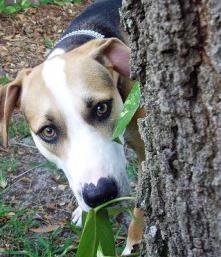
All embarrassment aside for a moment, it is time to take a closer look at your pet’s poop. As responsible pet parents, we have a great opportunity to evaluate the general health – and specifically, the digestive health – of our pets by closely observing their stool. The quality of your pet’s bowel movement is a good general indicator of gut health, which has a substantial impact on the overall health of your pet. That is why it is important to get the scoop on your pet’s poop!
Top 6 Criteria for Evaluating Your Pet’s Stool:
1. Color:
Generally a dog’s stool is brown. Cats usually require more protein in their diet and so the color is usually a bit darker brown. Color can vary a bit from day to day but not significantly.
A dark tar-like color may indicate blood in the stool, and can be very serious. Fresh blood on the surface of the stool also indicates a potential problem.
White stool suggests constipation and possibly dehydration; lighter green or pale yellow feces suggests a digestive issue. Contact your veterinarian to report if your pet’s stool exhibits any of these colors, as there may be an underlying medical condition.
2. Consistency:
A healthy stool should be firm and moist. That consistency makes it easy for your pet to pass, and equally easy for you to pick up and discard.
Diarrhea (loose, watery stool) is a clear indicator of a problem, though there are as many causes of diarrhea as there are leaves on a tree! Too large a meal, rich foods, an abrupt change in diet, eating something (food or non-food items) from the house or yard, internal parasites, infection, food intolerances, allergies and many more circumstances can be the cause of diarrhea.
Constipation (hard, dry stool) can be difficult to pass, and often causes significant discomfort to your pet. Reduced water intake and lack of exercise are two possible causes of constipation.
3. Quantity:
It is a common misconception that the smaller the stool volume is, the better digestibility and the better the diet is for the pet – though that does not always hold true.
However, monitoring stool volume is very important. Too much stool and the pet may not be getting the full benefit of the diet; it may cause some abdominal discomfort for the pet. Too little stool and the food may not pass through the gut at the right speed, affecting digestibility and causing intermittent diarrhea or constipation.
4. Smell:
Yes poop smells, but it should not be overwhelming. A change in diet, dietary indiscretion (getting into something outside or the garbage), poor diet and the wrong bacteria in the gut can all change the smell of your pet’s feces.
5. Foreign Matter:
Grass, hair, parasites, bones, toys or pieces of toys, seeds, and almost everything small enough to pass through the digestive tract has been seen by veterinarians. Monitor your pet around the house and outdoors to make sure he doesn’t ingest anything he shouldn’t.
6. Unusual Observations:
Excess gas can be annoying, but may also be a symptom of another digestive issue. Talk to your vet if your pet is emitting excessive gas or is having difficulty passing a bowel movement.
Fecal material on the hair coat around the rectum might suggest diarrhea. If it persists, check with your vet on this matter as well.